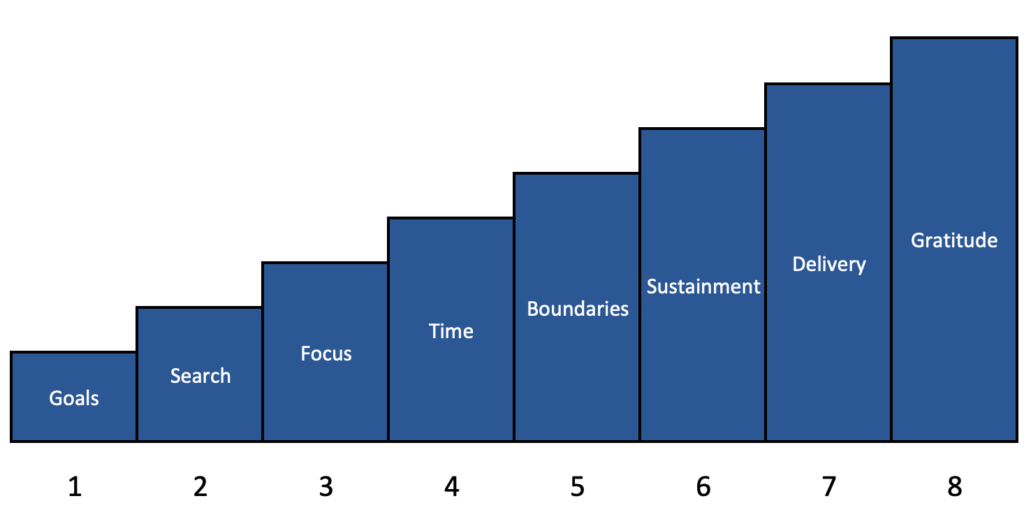
Some of the most significant relationship challenges we face are in the workplace.
Building professional relationships requires both process and skills; alas, many of us have never learned the process or developed the skills, and, as a result, our relationships in the workplace suffer.
The good news is that with some pointers, a rudimentary understanding of the steps involved, and the necessary skills, you can build relationships that benefit both sides, leaving you better equipped to achieve your goals.
In today’s article, we’ll be looking at the methods of building professional relationships; we’ll be covering:
- Why we need to build professional relationships
- How professional relationships are formed
- Focusing on the right relationships
- What are the steps in building professional relationships?
- What skills do we need to build relationships?
- What are the signs of a bad professional relationship?
- What are the signs of a good professional relationship?
- Common mistakes people make when trying to form professional relationships
Ok, let’s get to it!
Why we need to build professional relationships
There are numerous benefits from having positive professional relationships:

1/ Professional Relationships enable us to be effective in our role.
Positive relationships can facilitate support or input from others in our daily tasks.
2/ Professional relationships help build employee engagement
We are more likely to feel allegiance to our organization and our teammates where we have positive work relationships.
3/ Professional Relationships make us feel more content,
Positive social interactions play an essential role in well-being in the workplace. When we connect with others, we’re far more likely to feel contentment and less likely to feel stressed.
4/ Professional Relationships help us focus on opportunities
With positive relationships, we are far more likely to focus on solutions and seek out opportunities.
5/ Professional Relationships create Networks which in turn create an advantage
Networks offer numerous benefits, including:
- Access to resources to help solve problems
- Support for career advancement
- Gain knowledge
- Gain insight from different perspectives
How professional relationships are formed
While it might feel that some relationships mysteriously just appear, they are, in fact, the result of a process formed over several steps; these are usually shown as:
- An initial introduction – This could be in various settings, from a meeting through to making someone’s acquaintance while performing your job. This introduction will usually require elements of:
- Proximity (Physical or Virtual) – i.e., being located in the same space, facilitating communication to occur.
- Communication -Identifying yourself and your position within the organization, finding out about the other individual(s)
- Some form of mutual interest or shared goal.
2. A follow-up
A further interaction, typically where we learn more about the individual(s) and identify areas where benefits can be attained (usually for both parties). These benefits might be:
- Assistance or support within our job role
- Access to a wider network of people
- Career help
- Problem-solving
- Information
- Mentoring / Advice
3.Establish an ongoing relationship
Once individuals have established benefits, a relationship develops where a series of interactions occur to deliver against the other’s need. These interactions may be frequent or sporadic, lengthy or short; they may have various attributes, the important aspect is they take place.
4/ Ongoing communication
For most relationships to be effective, regular communication is required.
It’s important to remember in all this that some relationships happen more naturally than others, while some take work (and some may take significant work!).
Focusing on the right relationships
The basic premise behind relationship building is that our time is limited.
The sheer number of people we interact with at work can be significant.
We can’t target everyone.
So what’s the answer?

We need to think strategically and consider our objectives and how our network can facilitate them, focusing primarily on
- Which relationships help us achieve our goals
- Which relationships benefit us now
- Which relationships may aid in the future.
By analyzing in this way, our attention will typically be drawn to three camps:
- Team members – our immediate colleagues and team members, often those within the same department as us or those with who we have significant levels of interaction with.
- Leadership – We will typically interact with our line manager and elements of the organizational leadership team. Leadership can be a significant driver behind our success or failure. Once again, our direct manager aside, we need to be strategic in our choices. Will developing a relationship with the Engineering Manager help achieve our goals? Only marginally? OK, Let’s focus on the leadership that can.
- Stakeholders – There are various groups of Stakeholders from customers, suppliers, sponsors, etc. You’ll no doubt have interactions with pockets of the stakeholder community. Once again, consider how they can help you with your goals.
What are the steps in building professional relationships?
Building on our earlier discussion on how relationships are formed, we now consider a more detailed view of relationship-building steps. This usually involves:

1/ Identifying the goal of the relationship
2/ Analyze where others can provide strengths & opportunities
2/ Find the right people
3/ Schedule time
4/ Identify boundaries on each side
5/ Focus on sustainment
6/ Deliver against the goal(s)
7/ Demonstrate gratitude
What skills do we need to build relationships?
Now that we’ve identified the need to prioritize our relationships and the process by which we build them let’s now look at the skills we need in the process.
The key message here is that relationship building centers around two main facets
- Organization & Planning – the need to identify participants and maintain engagement
- Soft skills – skills that help us build that all-important connection with the other party.
These soft skills may include:
- Respect
- Communication
- Empathy
- Ability to treat the individual as a person
- Trust
- Teamwork
- Problem-solving
- Selflessness
Soft skills may not come easy. Some may deliver a particular relationship faster than others, depending on the individuals themselves and their needs.
Remember that soft skills can be learned and may take practice in order to enable you to use them effectively.
What are the signs of a bad professional relationship?
Having now discussed how to build a relationship, what happens when they go wrong? How do you spot a bad relationship?
All relationships are likely to have some level of conflict at some stage, and with the sheer multitude of work relationships we have, it’s no surprise that not all of them will be positive.
But, what happens if these issues are not occasional and are, in fact, the mainstay of the relationship?
Here are some typical signs that your relationship may be unhealthy.
- Unhealthy competition exists between participants.
- Avoidance between those involved
- Dishonesty
- Poor communication
- Boundaries are ignored
- Favoritism
- Arguments
- Lack of responsibility
- Negative comments
This is not an exhaustive list, and in many cases, what makes a relationship bad is decided upon by those in the relationship itself.
Ultimately a bad relationship is unlikely to deliver against your relationship goals.
The key here is that if you don’t feel that the relationship is working and is not delivering towards your goal, you need to take a step back and evaluate it, identifying areas that are not working and should be discussed with other participants and fixed.
What are the signs of a good professional relationship?
So now we’ve covered the signs of a bad relationship, how do you know you are in a positive one?
Once again, here are some signs to look out for.
- Mutual respect
- Accountability
- Willingness to resolve conflict
- Empathy
- Inclusion
- Trust
- Equality
- Willingness to collaborate
Common mistakes people make when trying to form professional relationships
Finally, let’s look at some of the common mistakes people make when forming professional relationships. These mistakes can often lead to the relationship being ineffective. Common mistakes include:
- They have a goal that’s unrealistic
- They forget about mutual goals (and target only their own)
- They fail to sustain the relationship
- They leave it to the other party to manage communications
- They fail to appreciate the other party seeing them only as a means to an end
- They fail to explain or understand boundaries
- They are not honest (often about the relationship itself)
- They try to achieve their goal too quickly and become disinterested when it takes time
Summary
There’s no getting away from the need for professional relationships – they can help you in a myriad of ways.
However, a great relationship will take effort and dedication if it is to be successful.
Establishing goals and following a trusted process can help enormously.
Once a relationship has been formed, it will need regularly evaluating to ensure that the goals are being met and both sides are receiving value.
What’s your experience of building effective professional relationships? Do you have some methods or tips you’d like to share? As ever, you can reach us on Twitter (https://www.twitter.com/sanbustrain) or by using the comments section below.
This article is part of our Human Resources Guide.